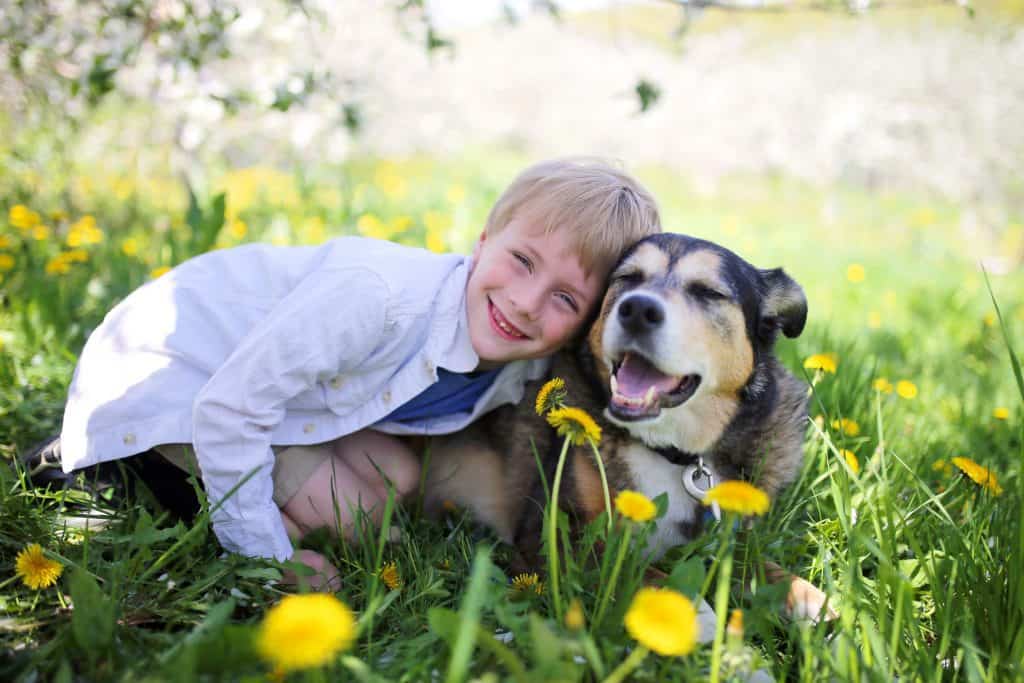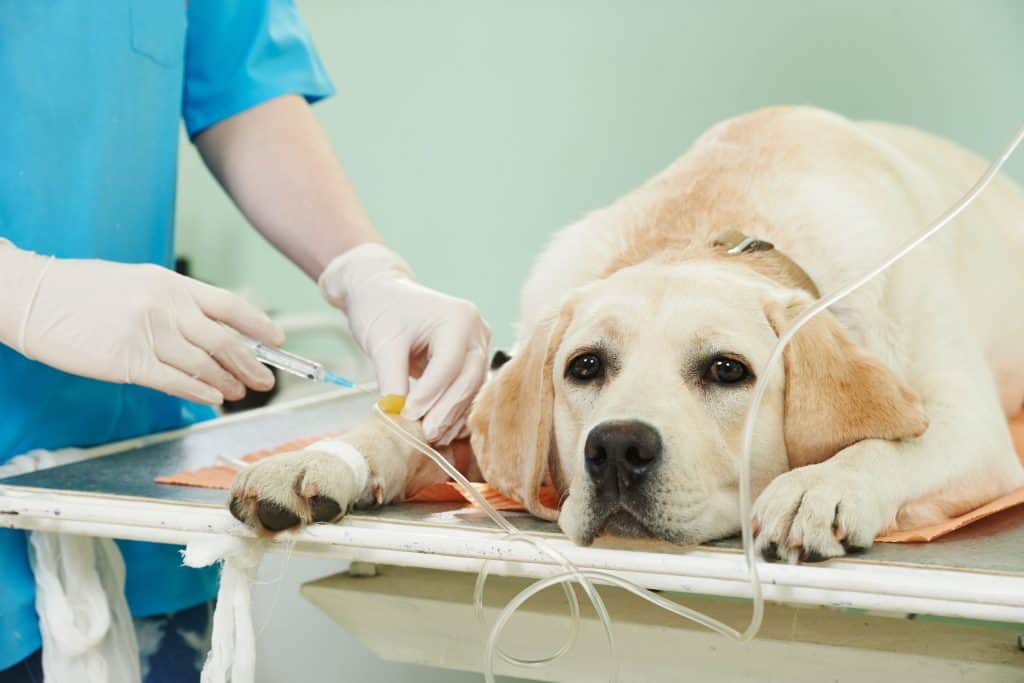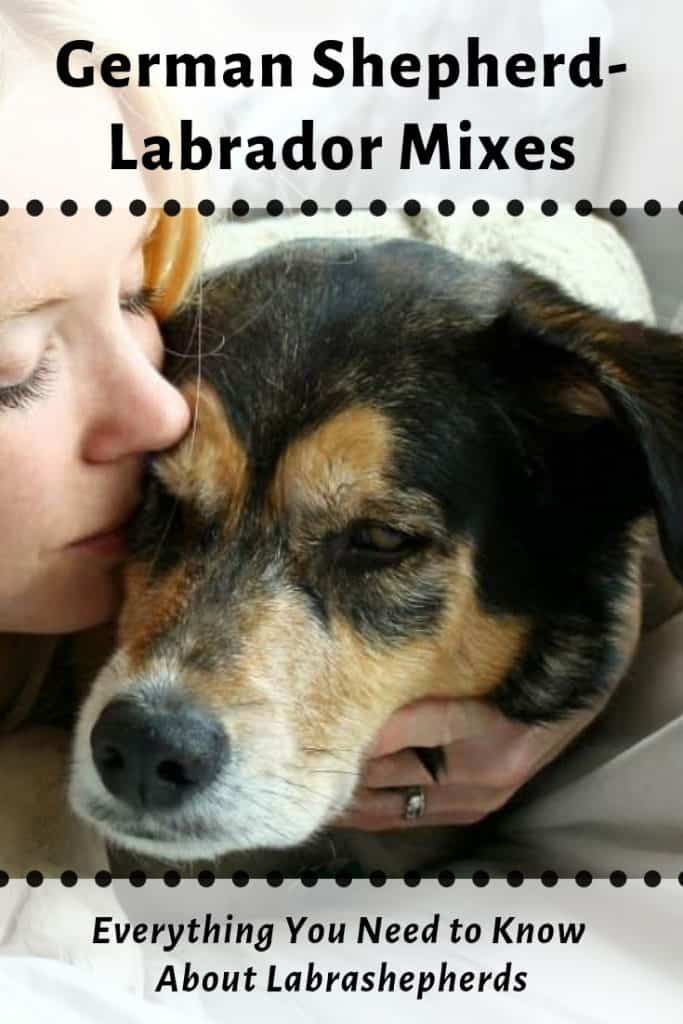German Shepherd / Labrador Mixes (Labrashepherd): A Complete Guide
It can be exciting to own a German Shepherd/Labrador mix, but with that, you will need to have a complete guide on taking care of them. It can be difficult to figure out what to feed them, what their temperament is like, and other concerns. Here’s the complete guide to owning a German Shepherd/Labrador mix.
Owning a dog is not easy. There are many factors to think about when it comes to owning such a lovable animal. As an owner, you have the responsibility to care for this pup.
This means that you will need to figure out if their temperament matches yours. And if their feeding schedule and health concerns are something you can handle.
At a Glance
First, let’s take a look at the Labrashepherd as a whole. You’re going to need to know about the whole picture because this will give you the first impressions about whether or not this dog is a good fit for you and for your family.
If you don’t know everything you can about a breed before you commit, then you might find yourself unable to take care of them or you might be the wrong fit for each other.
What is a Labrashepherd?
A Labrashepherd a mix between a German Shepherd and a Labrador. They are big dogs that have more of the caution of the German Shepherd than the playfulness of the Labrador. Although each dog has their own personality, most of the time, you will find that they are calmer than their other half.
They are loving and tolerant, though they might be a little shy when getting to know new dogs and people. When you have company over or have a new addition to introduce to their lives, introduce them slowly and in a stress-free environment.
Again taking from their German Shepard side, Labrashepherds are great guard dogs, which means that they can be pretty vocal, and will bark at new and strange things. They also shed quite a bit. They have a thick coat, which means that they are also more fond of cooler weather.
They need a lot of exercise and are great running partners (so if you ever need the
Physical Appearance
Labrashepherds are large dogs, weighing in at a range of 40 to 100 pounds. Standing on their hind legs, they are around four and a half feet tall (or a little less). They usually have the face, the head, and the back of a Labrador and the underside, the legs, and the tail of a German Shepard.
They have thick fur (from both sides of their family tree) that will shed easily and often. Because of their thick coat, be sure to clean them well and make sure they do not overheat. Their coat is about medium length.
They have sharp teeth and like to chew things, so be careful around things you really don’t want chewed on.
Temperament
Labrashepherds are great companions. They are gentle (if a little excitable) and loyal and make great guard dogs. They need a lot of exercise, so they are not the best idea for all of you people who are living in apartments or have no back yard.
They need a lot of room to run around and play. That also means that they need some playmates, so they are the
They are very protective, sometimes a little too much. This can lead to some barking problems, so take that into consideration.
Training
Socialization as a puppy is an important leading step to training, especially if your pup happens to be a mixed breed between a Lab and German Shepherd.
German shepherds are known to absolutely love the attention they receive from their owners. Though, by training them young on how to socialize will give them the confidence boost they need when meeting new dogs and people.
And just like any other dog, training your pup will be an ongoing commitment that can quite possibly last a lifetime.
Compatibility with Children

While these dogs are extremely friendly and kind, you should not leave your child with a medium to large sized dog alone.
That does not mean they can never play with those kinds of dogs. But you should always keep an eye on your child while they are playing with the dog.
Along with a German Shepard and Labrador mix, another great dog for your kids is a Husky and Retriever mix. Both of these breeds are popular for being affectionate toward children and if you give your pup the proper training they can be lovable balls of fur.
Another thing to be careful of when your child is playing with their dog is younger children tend to pull or tug on the pup’s ears. Which can be a bit annoying for them.
Because children don’t understand as much about dogs as you do, they won’t understand that dogs don’t like being pulled on.
But that doesn’t prevent the dog from lashing out if they become annoyed. This just goes back to the fact that you need to watch your children when they are playing with the dog.
You should also teach your children to simply not bother the dog while he is sleeping, eating, or being trained. These are the times that the dog wants to be left alone the most, and so if the children leave them alone, the dog will actually like the children even more, and that will minimize the chances of an outburst from either end if something goes wrong.
Exercise Requirements
Both breeds (Labradors and German Shepherds) are energetic, and with that being said as an owner of a mix breed you will need to provide the right amount of exercise for them.
You will need to have two hours of some vigorous playtime every day with your pup, this is guaranteed to tire them out since German Shepherds are known to bounce off the walls with energy if they aren’t tired out.
The most common way to exercise your dog is to take them out on daily walks. If you live close to a park, you can take them there and play frisbee or catch with them. Dog parks are also great places to take your dog for exercise because they can run around for a while without their leash and meet other dogs in the process.
These dogs are also great running partners because both sides of the family are excellent endurance breeds. That means you can also take them backpacking, hunting, hiking, and camping without worrying about them too much.
Just make sure that you always have enough water for your dog when you take them to go exercising.
Because both sides of the family are large and energetic, the Labrashepherd is going to be larger and more energetic. They are going to need a lot of space to move around. This means that they would best function in a bigger house and in a large backyard.
These are not good dogs to keep in apartments or with families that have too many members (that will limit the space they have to move around). They are also best for active families. On average, senior couples cannot provide enough activity or exercise for a dog like this.
Make sure that you allow your dog plenty of time outside so they can run around and get some vitamin D. Labrashepherds do not handle intense heat very well due to their medium length, thick coat, but they are fine to run around for a while on a summer day (don’t get too stressed out). Just make sure they have easy access to water and shade.
Health and Grooming

German Shepherd Health Risks
Since German Shepherds are bred to be able to have an exaggerated body shape, they can become prone to a large list of health problems, such as:
Elbow and hip dysplasia – looseness in the joints that will later cause arthritis
Gastric
Chronic degenerative radiculomypathy – is a slow onset paralysis located in the back legs, and that is caused by a loss feeling of the nerve fibers that are able to control that
Panosteitis – it is an inflammatory bone disease
More issues they can be prone to include:
- gastrointestinal diseases
- anal infections
- eye diseases
- allergies
- epilepsy
- an under active thyroid
One of the biggest health issues that Labradors come across is hip and elbow dysplasia. This is just a looseness in the joints that will lead to some painful arthritis that your pup will have to suffer through.
Another health issue they can be prone to progressive retinal atrophy, which is a failure of the retina (located in the back of their eyes) and that can lead to blindness.
Labradors are also known to be quite greedy when it comes to their food, so obesity can also become a problem is not taken care of properly. Feed them at the same times every day and the same amount. If you have a schedule, the dog will adapt to it as well.
It would be smart to train your kids on the dog’s feeding schedule as well. This ensures that they won’t accidentally overfeed your dog or feed them when you have already fed them. This also allows them to get involved in raising the dog.
A rule of thumb to follow when it comes to purchasing your dog’s food would be to steer clear from cheap grocery store kibble. That will not be the best option for your dog.
You want to be sure that the ingredients you are feeding them are of quality, and are safe for them to enjoy.
Going back to exercise, that in itself is a large factor in keeping your pup at their maximum health. Be sure to keep their weight at the recommended level and help them build muscle. Talk to your dog’s vet about the right weight for them and get information and tips on how to make sure that your dog is the correct weight.
Each dog is different, so don’t freak out if your dog is a little over or a little under their recommended weight. You just have to make sure that you know your dog well and know what weight they seem happiest at. If you do start to have concerns, schedule a vet appointment for your dog. It is better to be safe than sorry when it comes to taking care of your dog.
Maintaining your dog’s health doesn’t have to be a long or tough process. Usually, it is enough to simply take them on a walk or run every day and feed them correctly. This is actually a great way for you to maintain your health as well.
If you seem to be concerned with the health of your pup, scheduling an appointment with your veterinarian would not be a bad idea. They will be able to tell you what exactly is wrong with your pup.
Coat and Cleaning
Since a German shepherd and Labrador both have double coats, you can expect your pup to have a double coat as well.
If your pup also happens to inherit their shepherd parent’s gene of a longer, shaggier coat get ready for some serious grooming requirements.
To make sure your dog looks his best you should brush through their fur at least 2 to 3 times a week to prevent less shedding.
When it comes to bathing your pup, you should do this every 2 to 3 months, or whenever their fur becomes dirty.
Something you may not have thought about is the importance of your dog’s dental hygiene. At the least, you should brush your dog’s teeth 3-4 times a week.
Feeding a Labrashepherd
When it comes to feeding your pup, this can differ between their size. As they grow, their feeding requirement will change and the same goes if they are smaller than the average mix.
If you have a medium or big sized dog, you can feed them 3 to 4 cups of their food (high-quality) every day. You can divide those 3 to 4 cups into two meals.
Dry foods are best for your dog’s teeth and gums, so think about that before you give them a certain treat!
You should avoid buying anything commercial or store-bought dog food for your pup. That can cause a change in their health, growth, and fur coat appearance.
Something you can do would be a to include a combination of raw meat and veggies into your dog’s regular feeding schedule. Since this mix breed is carnivorous, you should think twice before feeding them something high in carbohydrates
They are meant to eat protein. It is very important that you give your Labrashepherd enough protein every day. They are not meant to be vegetarian, even if you are. Keeping your dog healthy through a complete diet is essential.
Related Questions
How long does a Labrashepherd live? Your Labrador/German Shepherd mix has the average life expectancy of 10 to 12 years. This can depend on their breeding, their overall health, and how active a lifestyle they live.
Are German Shepherds protective? This breed of dog is naturally protective of what is theirs, and that includes family. Without the proper training, your German shepherd can become extremely fearful or timid, but they are still naturally protective of their homes and will step up to protect when a situation calls for it.
How much does a Labrashepherd cost? The average cost of a German Shepherd/Labrador mix puppy can cost anywhere around $150 to $600. It may depend on where you purchase the Labrashepherd from (a breeder or a pet store).

